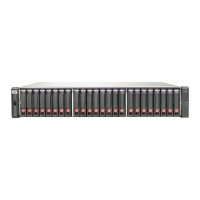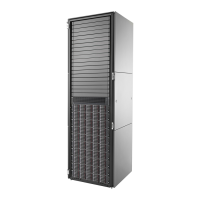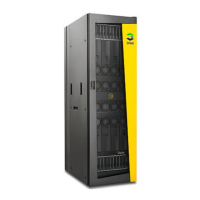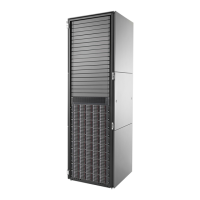HP StorageWorks P2000 G3 MSA System SMU Reference Guide 105
6 Using Remote Snap to replicate volumes
About the Remote Snap replication feature
Remote Snap replication is a licensed feature for disaster recovery. This feature performs asynchronous
(batch) replication of block-level data from a volume on a local storage system to a volume that can be on
the same system or on a second, independent system. This second system can be located at the same site
as the first system or at a different site.
A typical replication configuration involves these physical and logical components:
• A host connected to a local storage system, which is networked via FC or iSCSI ports to a remote
storage system.
The required configurations for replication to be fault tolerant are as follows:
• Two FC-only systems each with both ports on each of the four controllers connected to an FC switch.
• Two FC/iSCSI systems each with both iSCSI ports on each of the four controllers connected to an
iSCSI switch.
• Two FC/iSCSI systems each with both FC ports on each of the four controllers connected to an FC
switch.
• Remote system definition. A management object on the local system that enables the MCs in the local
system and in the remote system to communicate and exchange data.
• Replication set. Associated master volumes that are enabled for replication and that typically reside in
two physically or geographically separate storage systems. These volumes are also called replication
volumes.
• Primary volume. The volume that is the source of data in a replication set and that can be mapped to
hosts. For disaster recovery purposes, if the primary volume goes offline, a secondary volume can be
designated as the primary volume. The primary volume exists in a primary vdisk in the primary system.
• Secondary volume. The volume that is the destination for data in a replication set and that is not
accessible to hosts. For disaster recovery purposes, if the primary volume goes offline, a secondary
volume can be designated as the primary volume. The secondary volume exists in a secondary vdisk in
a secondary system.
• Replication image. A snapshot that contains the data for a specific point in time for a replication set’s
primary volume, as viewed by any volume in the replication set. All snapshots with the same image ID
contain the exact same data, and therefore represent the same replication image.
The following figure illustrates three replication sets in use by two hosts:
• The host in New York is mapped to and updates the Finance volume. This volume is replicated to the
host in Munich.
• The host in Munich is mapped to and updates the Sales and Engineering volumes. The Sales volume is
replicated from System 2 to System 3 in the Munich DATA center. The Engineering volume is replicated
from System 3 in Munich to System 1 in New York.
